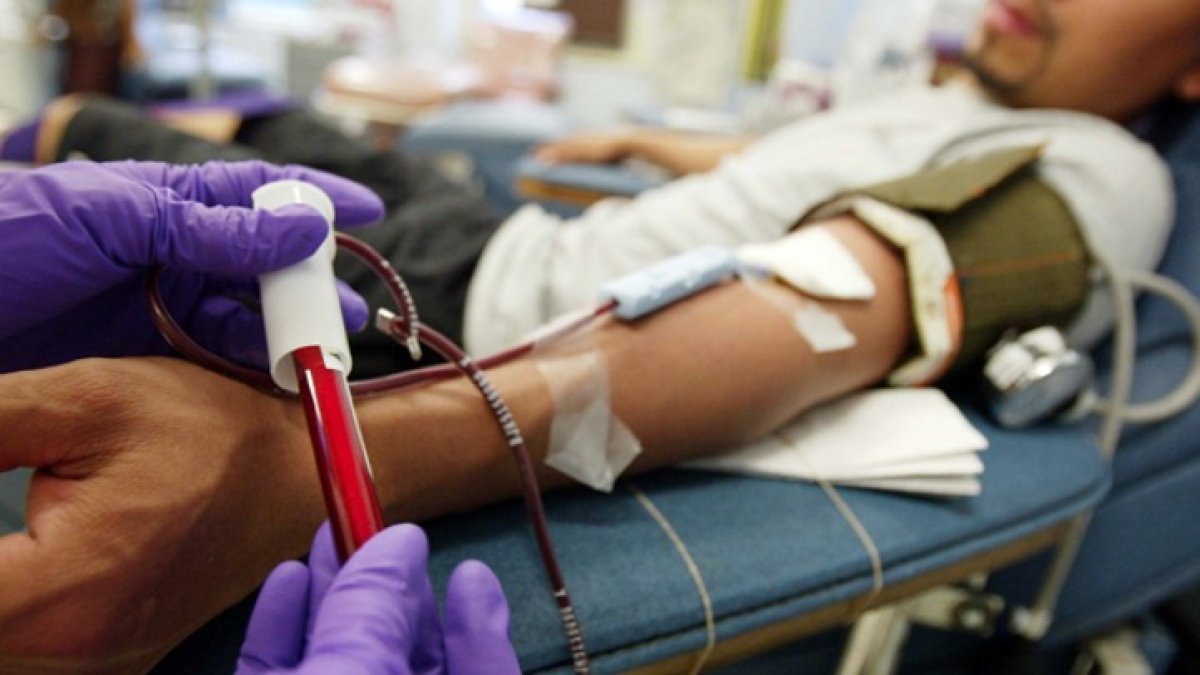Blood
Red Cross declares national blood shortage amid record climate disasters this year
What to Know
- The American Red Cross Blood is urgently calling for donations after announcing that the national blood supply has hit “critically low levels.”
- The year has broken a record of disastrous weather events across the nation with 23 individual climate-related disasters, according to the NOAA.
- Red Cross is closely watching Hurricane Lee and the potential impact on northeast communities later this week, which could further stretch the organization’s critical shortage.
The American Red Cross Blood is sounding the alarm for donations after announcing the national blood supply has hit “critically low levels,” particularly due to a series of tragic climate-driven natural disasters.
The nonprofit provides around 40% of the U.S. blood components, including platelets, and is reporting a drop in supply of nearly 25% since early August.
Red blood cells have a shelf life of just over 40 days with platelets only five days to be used. Type O negative are considered universal donors, but only 7% of Americans have that blood type.
Blood donations have been generally down since the start of the COVID-19 pandemic. Andrea Cefarelli is the senior vice president of corporate communications and public affairs at New York Blood Center. She says first-time donors have been down 50% since the pandemic.
“Prepandemic, 25% of our blood supply came from young donors. Kids in high school who get out of class get to donate in the gym with friends — those donations have not bounced back for multiple reasons,” Cefarelli told NBC New York during an interview, who continued to note the teacher shortage and early retirement that also contributed to the loss.
Hybrid and remote work schedules have decreased the number of neighborhood and corporate blood drives.
This year has already broken a record of destructive weather events across the nation with 23 individual climate-related disasters leaving at least $1 billion in damage, based on new data by the National Oceanic and Atmospheric Administration.
This surpasses the previous record in 2020 with 22 events.
In August, there were eight national weather disasters, including Hurricane Idalia and Maui wildfires, that combined cost the country almost $60 billion with over 250 deaths, the NOAA report said.
The Red Cross is closely trackingHurricane Lee and the possible impact on northeast communities later this week, which could further stretch the organization’s critical shortage.
The destruction caused by Hurricane Idalia in late August displaced at least 10,000 people and caused the U.S. over 700 units of blood and platelets to go uncollected, according to the Red Cross. Blood distributions to hospitals are outpacing the number of donations.
Dr. Alexander Indrikovs is the senior director of Northwell Health’s blood bank, a group that serves 23 hospitals in the New York City metropolitan and Long Island area. Dr. Indrikovs notes that this shortage is nothing new, but typically worsens over the summer months, and is preparing for the potential hurricane aftermath with emergency plans.
“Hurricanes are easy to prepare for because you know they’re coming days ahead, but there are situations in which preparations are more difficult or impossible. If you have a mass shooting in the region, all of a sudden, you have an influx of patients in maybe multiple hospitals,” Dr. Indrikovs told News 4.
Dr. Indrikovs has been practicing medicine for four decades and says he has seen more patients with clinical conditions that require blood transfusions.
Over the last three years, this doctor says clinicians have communicated with the New York Blood Center more often than before on rationalizing transfusion supply so there is blood for everyone.
“We receive a report every Monday from the New York Blood Center that tells us those blood groups mostly used by patients, group O and A, what is their situation, what is it they have to distribute to New York hospitals,” Dr. Indrikovs said.
The rate of blood transfusions is incredibly high. Every two seconds, someone in the U.S. needs blood or platelets, with about 30,000 units of red blood cells required each day, says the Red Cross.
Cefarelli says every holiday weekend the New York Blood Center “bites its nails” as to whether it will have enough platelets, which go to cancer and leukemia patients.
“Coming out of the Labor Day holiday, we had a critical shortage of platelets. Platelet donors tend to be a little older and sit in a donor center for about an hour and a half to two hours,” Cefarelli noted.
The New York Blood Center is currently expanding donor centers, the newest of which opening in Dutchess County on Oct. 2.
As an initiative to bring in more donors, the Red Cross is offering those who give blood, platelets or plasma a limited-edition t-shirt, while supplies last, up until Sept.18.

